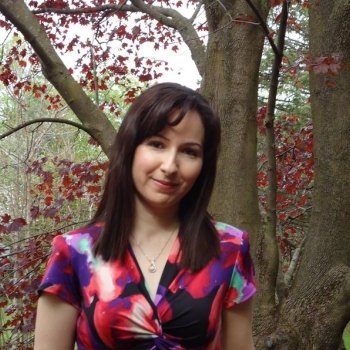Getting To Know Your Professors: St. Lawrence University’s Language Resource Center Fun Instagram Series
By Gisele El Khoury, St. Lawrence University

DOI: https://www.doi.org/10.69732/IQEA1122
This year, the Language Resource Center at St. Lawrence University has been working on exploring the core of academia through the lens of interpersonal connection. In this time when social media is one of the primary means of connectedness, “Get to Know Your Professor in 10 Questions” emerged as an interesting Instagram series, challenging the traditional student-teacher dynamic by unveiling the personalities behind the titles.
The project was divided into three steps:
- Coming up with the questions that would provide insight into the professors’ lives outside of the classroom;
- Conducting interviews with the professors to gather their responses;
- Designing visually appealing graphics to accompany the interview reels on Instagram and other social media platforms.
For the first step, we had to work on picking the ten questions. The members of the LRC team came up with fifteen questions each, and then we decided on the final ten questions based on relevance and diversity. We wanted to ensure that the questions covered various aspects of their personal lives, hobbies, and interests. Once the questions were finalized, we scheduled interviews with each professor, allowing them to choose a location they felt comfortable in.
Our ten “get to know you” questions:
- What’s the best excuse a student has given you for not doing their homework?
- What’s your favorite restaurant in the area?
- If you could pick up SLU and move it anywhere worldwide, where would you move it?
- If you won the lottery and decided to give up teaching, what would you do instead?
- How do you start your day?
- What was the last movie you watched in the cinema?
- What pets have you had or would like to have?
- What superpower would you choose if given a chance?
- What are your must-have smartphone apps?
- If you could meet any person on earth (alive or a historical figure), who would it be?
Next, we had to figure out if we should share the questions with the faculty before the taping or keep them as a surprise. We ended up not sharing the questions, as we wanted the faculty members to provide spontaneous, authentic responses. The element of surprise adds an exciting and spontaneous touch to the taping event. It also allows us to gauge their true personalities and preferences, making the experience more engaging for the faculty and the audience. The anticipation of their reactions and the diverse answers we might receive make this decision thrilling.
The second step was to bring this vision to life; the recording and editing process unfolded seamlessly through CapCut (a free, all-in-one video editing tool.) We also used Canva (an online graphic design platform for social media graphics and presentations) to create the thumbnails for our videos.
The third step was to share the recording on social media platforms, leveraging the power of online communities to amplify the reach and impact of the interviews. We shared them on Instagram and Facebook, generating the buzz we hoped for. The videos quickly gained traction, with hundreds of likes, comments, and shares within the first few hours. With faculty members coming from around the globe and sharing the links with their acquaintances overseas, the content reached far beyond our initial goal of strengthening connections on campus. The response was enthusiastic, with viewers appreciating the informative and entertaining videos. We saw our hard work pay off!
Overall, recording, editing, and sharing videos on social media proved to be a highly effective way of disseminating knowledge and creating meaningful connections with a broad audience. But why do this? The goal was simple: to make students feel closer to their professors. Sometimes, teachers seem distant or hard to talk to. This project aims to change that. By sharing personal stories and hobbies, students could relate to their professors better. It wasn’t just about fun stories, though. These videos showed students that their professors are regular people, too. They have hobbies, favorite people, and travel adventures like students do. The Videos helped students feel more connected and comfortable around them.
Ultimately, this Instagram series was a way to bring students and professors closer. It showed that everyone at the university, no matter their role, is part of the same campus community.
Check out one example of our Instagram mini-series:
Check out the series at our LRC Instagram page: https://www.instagram.com/lrctech/


Don’t know if the problem is here or there, but the video froze early on. I think this is a great idea and a great project for a language learning center.